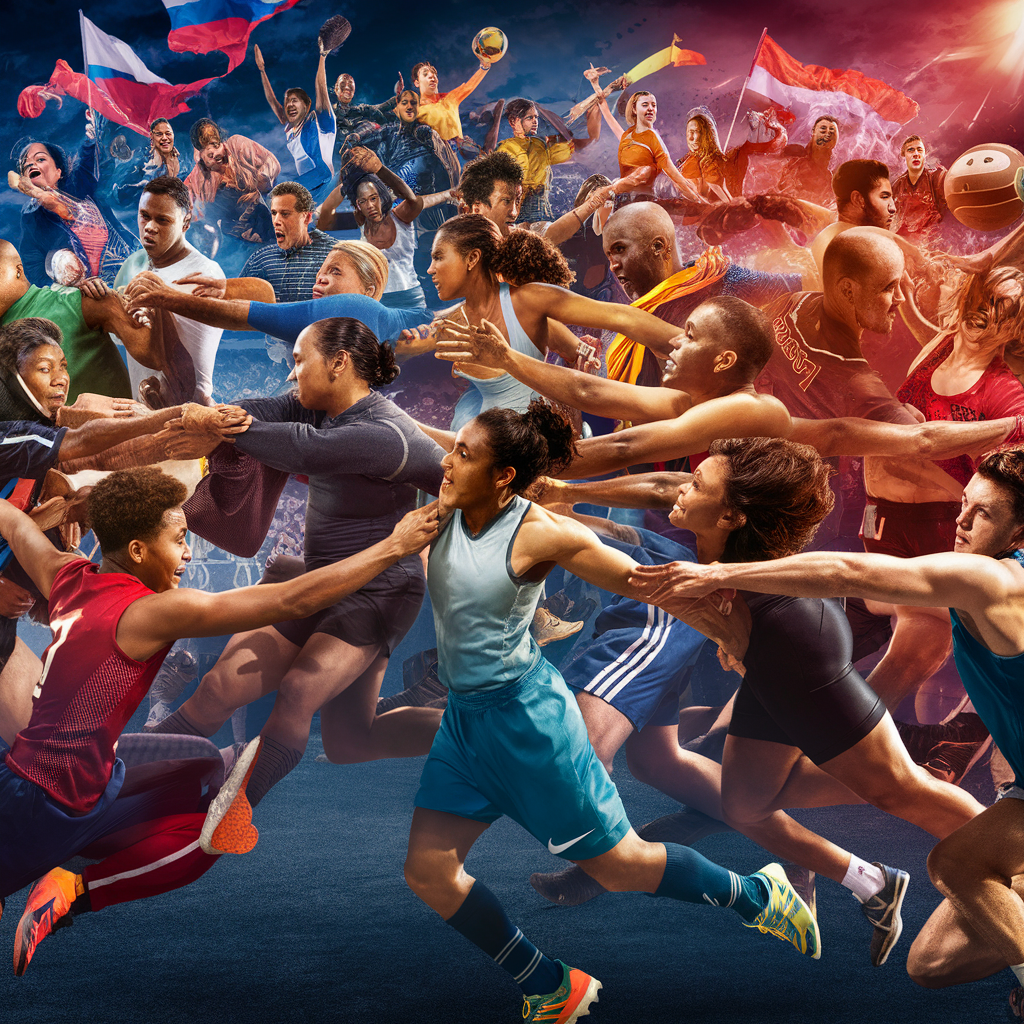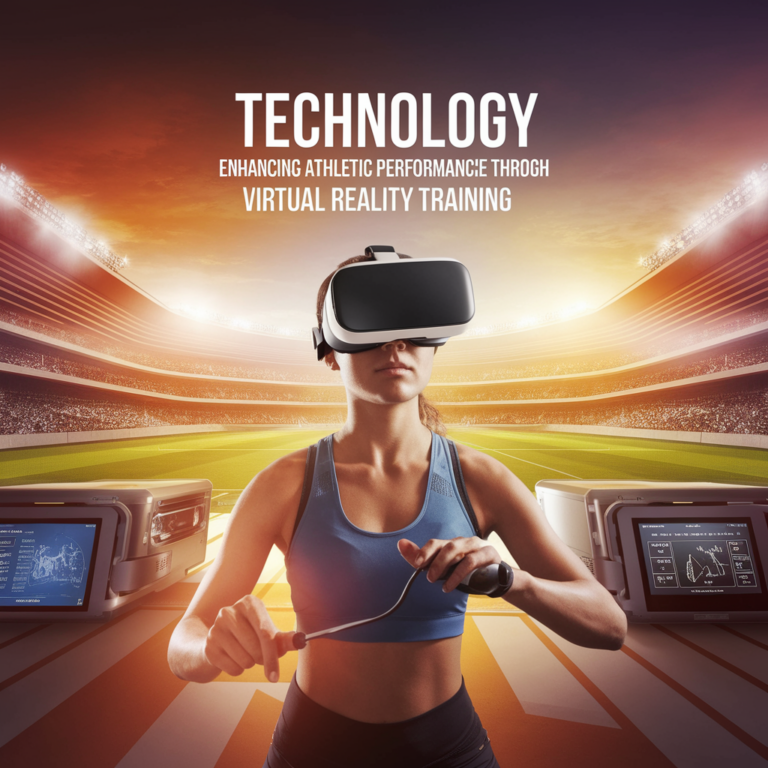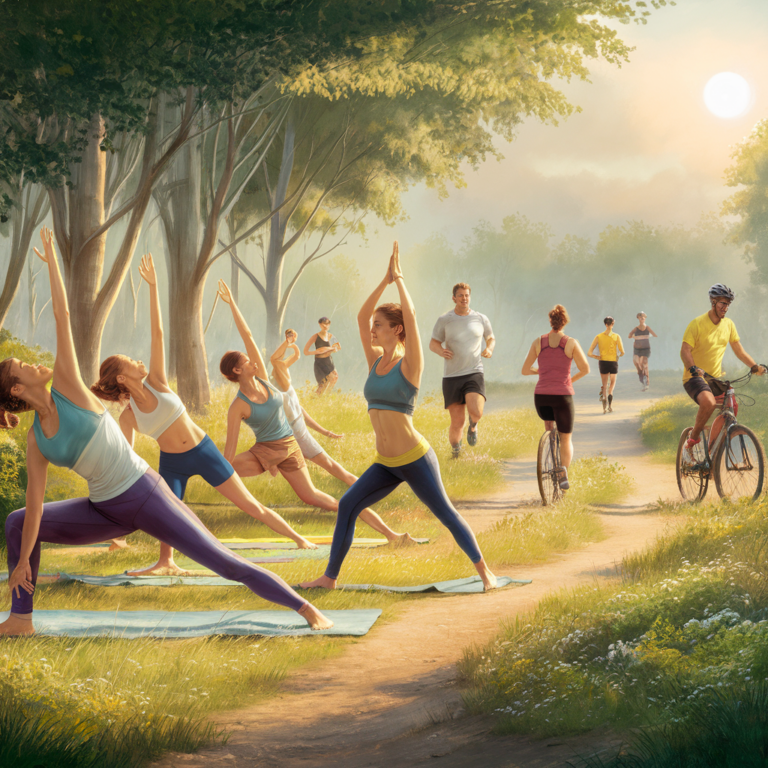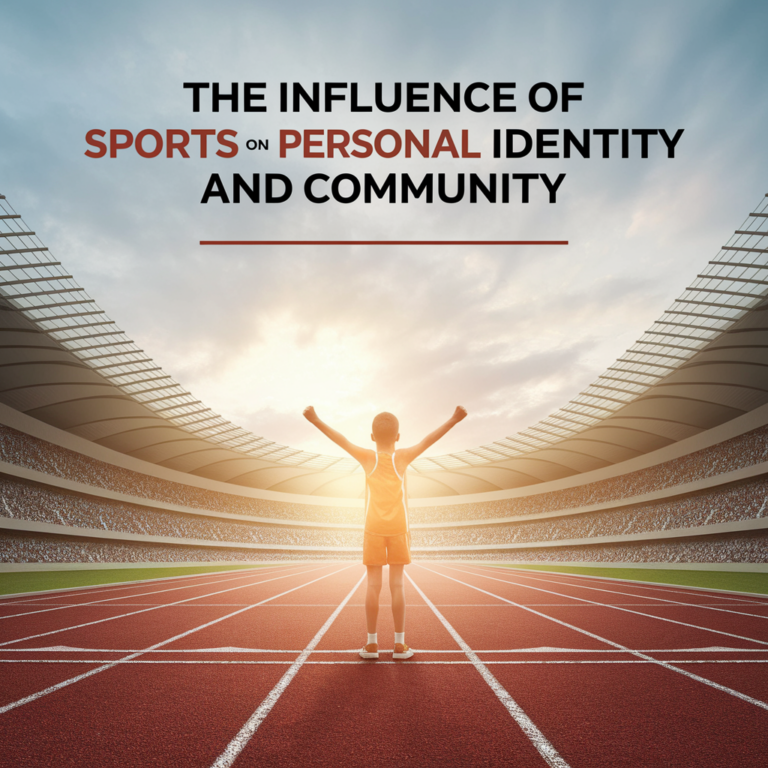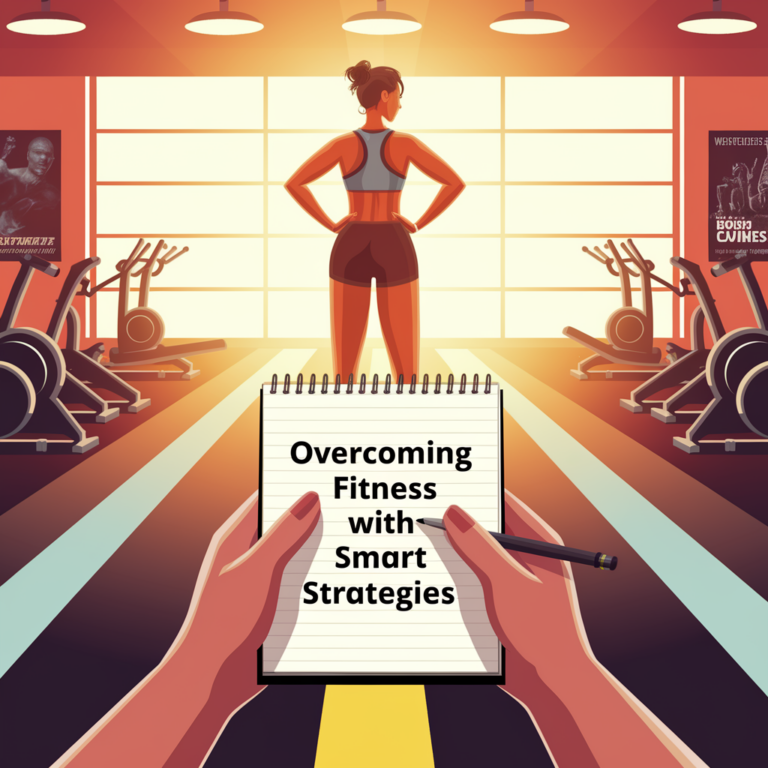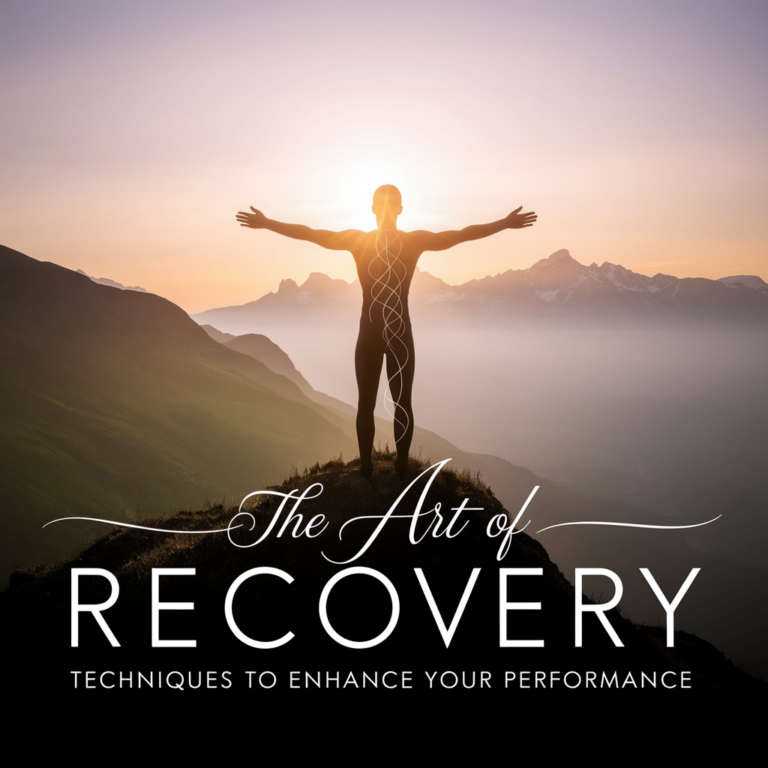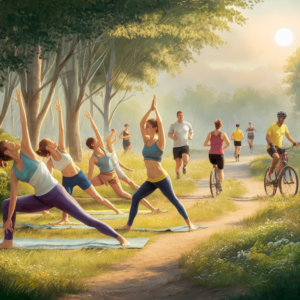Harnessing the Power of Community in Sports
Sports have a unique ability to unite people. They transcend boundaries, cultures, and languages, creating bonds that can last a lifetime. Whether it’s the roar of a crowd in a stadium, the chatter of players in a local park, or the quiet support of a community rallying behind a high school team, the essence of sports lies in community. This article explores how the power of community shapes sports, influences athletes, and fosters a sense of belonging. But let’s dig deeper—what does that really mean?
The Foundation: Community as the Bedrock of Sports
At its core, sports are about participation and connection. Communities come together to cheer for their teams, support their athletes, and celebrate victories—big or small. I remember standing in the bleachers of my local high school football field, feeling the electric atmosphere as the home team scored a last-minute touchdown. The collective gasp of the crowd, followed by an eruption of cheers, was a moment that brought us together. It struck me then how sports can turn strangers into friends, all united under a common goal.
A strong community can turn an average sporting event into an unforgettable experience. Consider the local little league games—parents, siblings, and neighbors gather every Saturday morning, not just to watch the kids play, but to bond over shared experiences, laughter, and sometimes the occasional snack bar treat (who doesn’t love a hot dog?). This sense of camaraderie is essential for the development of young athletes. It’s not merely about the sport; it’s about the relationships forged through teamwork and shared struggles.
Community Support: The Lifeblood of Local Sports
In many cases, local sports teams are the heart of their communities. They reflect local pride and identity, often serving as a gathering point for residents. Community support can take many forms:
- Financial backing: Local businesses sponsor teams, providing jerseys and equipment.
- Attendance: Fans fill the stands, creating an atmosphere that motivates players to perform their best.
- Volunteering: Parents and community members help organize events, coach teams, or run concession stands.
These elements create a feedback loop—when a community supports its teams, those teams perform better, which in turn fosters even more support. It’s a beautiful cycle, one that can sometimes feel like a well-oiled machine, running smoothly and efficiently.
The Role of Coaches and Mentors
Coaches don’t just teach skills; they often become leaders and mentors within their communities. Their influence can extend far beyond the playing field. A good coach recognizes the importance of fostering a sense of belonging among their players. They create an environment where young athletes can thrive, building not only skills but also confidence and resilience.
I recall a coach from my youth—he always emphasized teamwork over individual glory. He would often say, “There’s no ‘I’ in team, but there’s a ‘U’ in success.” Cheesy? Maybe. Effective? Absolutely. His approach helped us learn that our individual efforts contributed to the greater whole, and that’s a lesson that many carry long after the final whistle blows.
Creating Inclusive Spaces
Inclusivity is another vital aspect of harnessing community power in sports. It’s about ensuring that everyone, regardless of background, ability, or experience, has the opportunity to participate. This commitment to inclusivity can transform how communities experience sports.
Take adaptive sports, for example. Organizations that promote sports for individuals with disabilities are doing incredible work. They are not only creating opportunities for athletes to showcase their skills, but they’re also fostering communities that celebrate diversity. When I attended an adaptive sports event last year, it was heartwarming to see families cheering for their athletes, sharing stories, and connecting over shared experiences. The atmosphere was palpable—everyone was in it together, celebrating not just the victories but the sheer joy of participation.
Sports as a Tool for Social Change
Sometimes, sports can play a pivotal role in addressing broader social issues. Athletes and teams often use their platforms to raise awareness about critical issues, mobilizing their communities in the process. Think about the impact of initiatives like “Black Lives Matter” or campaigns for mental health awareness. These movements often gain momentum through the support of local communities, amplifying voices that need to be heard.
One powerful example is the NFL’s “My Cause, My Cleats” initiative, where players dedicate their game day cleats to causes that matter to them. This initiative has not only raised awareness but has also inspired fans to get involved, turning what might have been a simple football game into a rallying point for change. It’s a reminder that sports can be a platform for advocacy, encouraging communities to engage with important social issues.
The Digital Community: Connecting Beyond Borders
In today’s world, community extends beyond physical proximity. Social media and online platforms have transformed how fans engage with their favorite sports and teams. Whether it’s sharing highlights on Twitter, joining Facebook groups dedicated to local teams, or participating in virtual watch parties, the digital community has broadened the scope of sports fandom.
Take the example of a small-town basketball team that gains an unexpected following online. Fans from around the world can tune in to watch games live-streamed on YouTube, celebrating every three-pointer and buzzer-beater together, regardless of geographical distance. This digital ecosystem allows communities to connect in ways that were unimaginable just a few decades ago.
Grassroots Movements: Building from the Ground Up
Grassroots movements often emerge from community sports, bringing together individuals with a shared passion for a particular sport or activity. These movements foster a sense of ownership and pride, empowering community members to take initiative. They can also address local needs, whether it’s creating youth leagues, establishing training programs, or advocating for better facilities.
Consider the rise of community-run soccer leagues in underserved neighborhoods. These leagues often start with just a handful of kids playing in a park but can grow into organized events that engage hundreds, if not thousands, of participants. The beauty of grassroots movements is that they are driven by community needs and desires, making them more adaptable and responsive than larger organizations.
The Interplay of Sports and Culture
Sports are intrinsically tied to cultural identity. They can reflect societal values, foster local pride, and even serve as a medium for cultural exchange. For instance, think about the impact of the World Cup on national pride. Countries rally around their teams, uniting citizens in a celebration of identity and culture. It’s a spectacle that transcends sports—it’s a cultural phenomenon.
In my experience, attending local games often reveals layers of community identity. From the chants sung by fans to the colors worn proudly on jerseys, these elements reflect deeper cultural narratives. They showcase the unique stories and histories of communities, reminding us that sports are not just games—they’re a reflection of who we are.
Challenges Facing Community Sports
While community sports offer numerous benefits, they also face challenges. Funding is often a significant hurdle, with many local teams relying on donations and sponsorships to survive. This can lead to disparities in resources between affluent and less privileged communities. Additionally, the increasing commercialization of sports can sometimes overshadow the community aspect, focusing more on profits than on fostering local connections.
Another challenge is the changing dynamics of society. With busy schedules and digital distractions, engaging community members in traditional sports can be difficult. It’s essential for community leaders to find innovative ways to keep people involved, whether through flexible schedules, family-friendly events, or incorporating technology into the mix.
Looking Ahead: The Future of Community in Sports
As we look to the future, the potential for harnessing the power of community in sports is immense. With the rise of technology, we can expect to see even more innovative ways to connect people. Imagine virtual reality experiences that allow fans to feel like they’re part of the action, or apps that facilitate local sports meet-ups, making it easier for individuals to find and join teams.
Moreover, the continued focus on inclusivity and diversity will likely shape the landscape of community sports. As communities become more aware of the importance of representation, we can expect to see a broader range of sports offered and greater efforts to create welcoming environments for all.
Conclusion: The Heartbeat of Sports
Community is the heartbeat of sports. It’s the laughter, the tears, the shared experiences, and the unyielding support that make sports meaningful. As we harness the power of community, we not only elevate the sporting experience but also build connections that last a lifetime. So, the next time you find yourself at a game—whether it’s a local little league match or a professional showdown—take a moment to soak it all in. Acknowledge the power of the crowd, the unity of the players, and the sheer joy of coming together for a shared passion. After all, we’re all part of this beautiful tapestry called sports.

